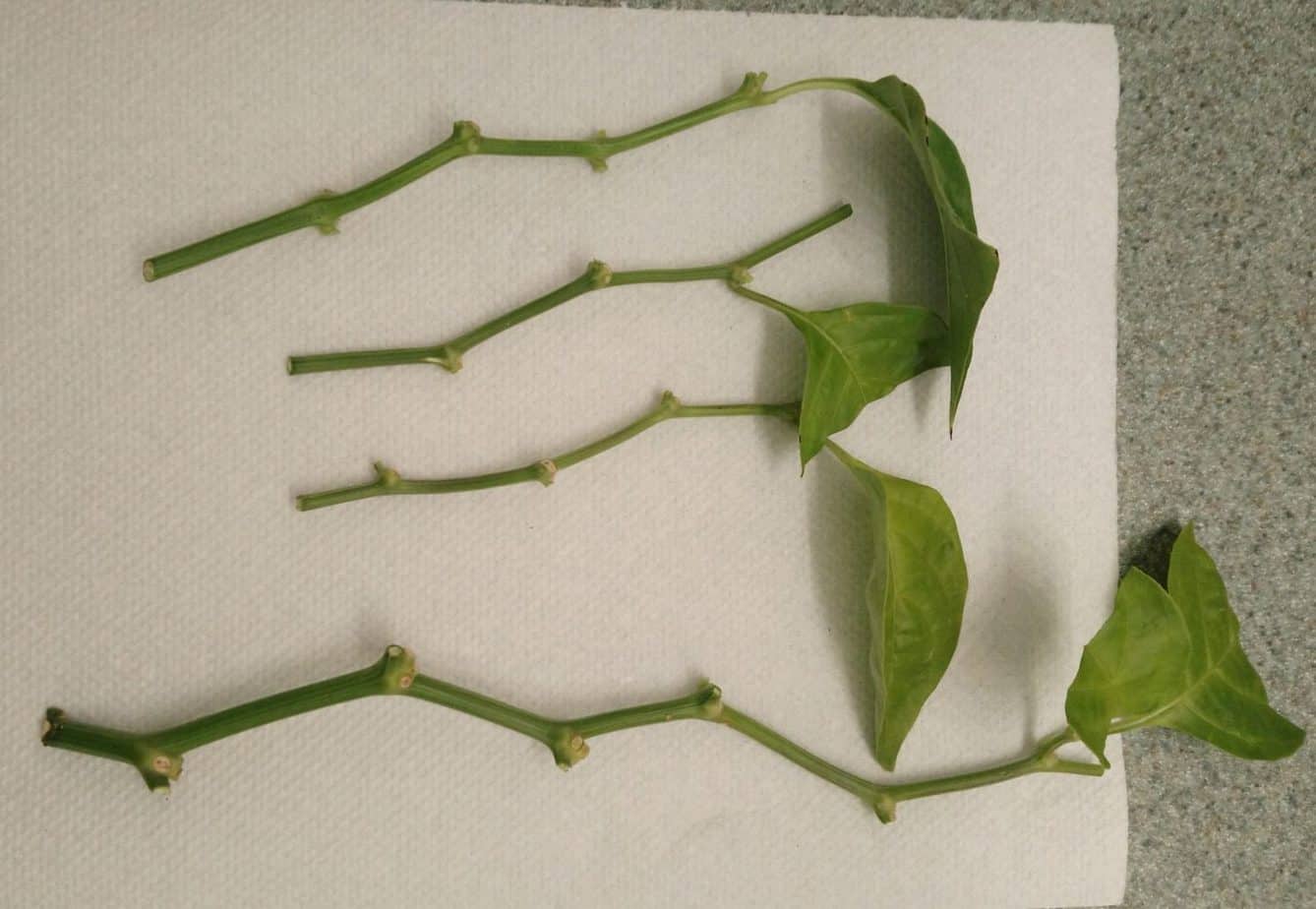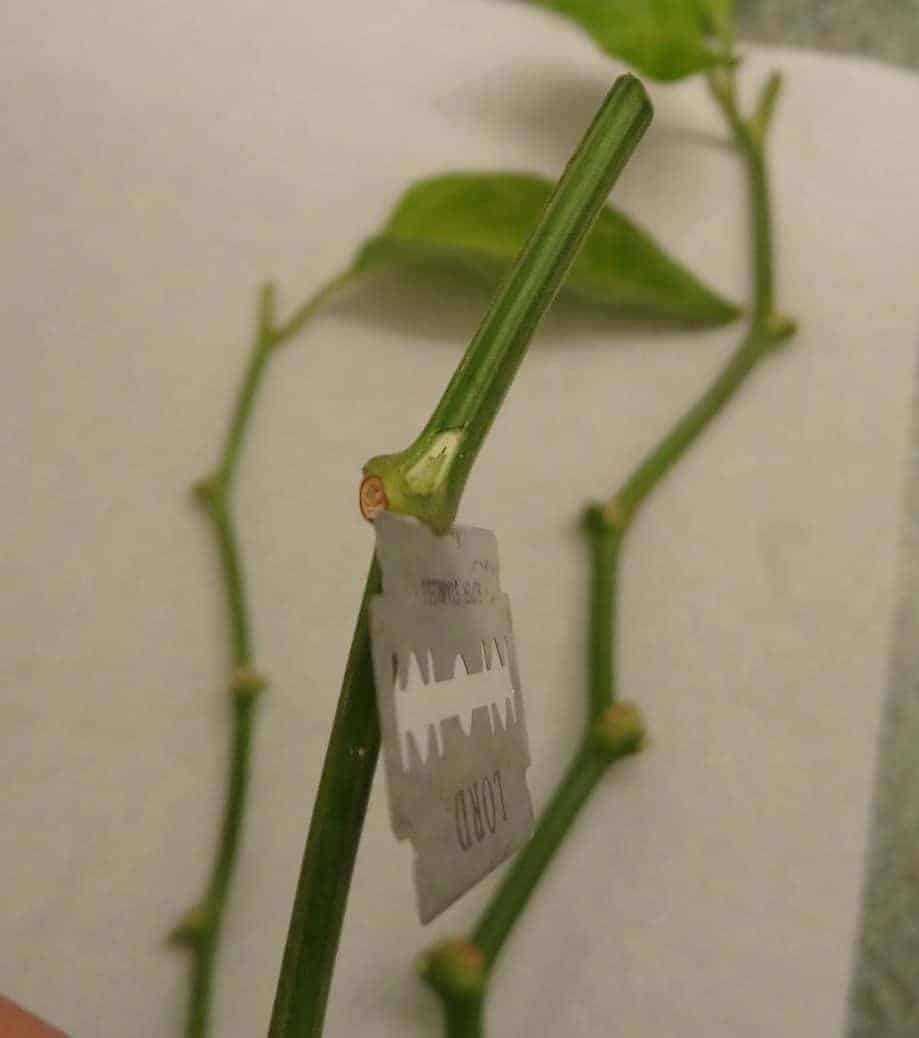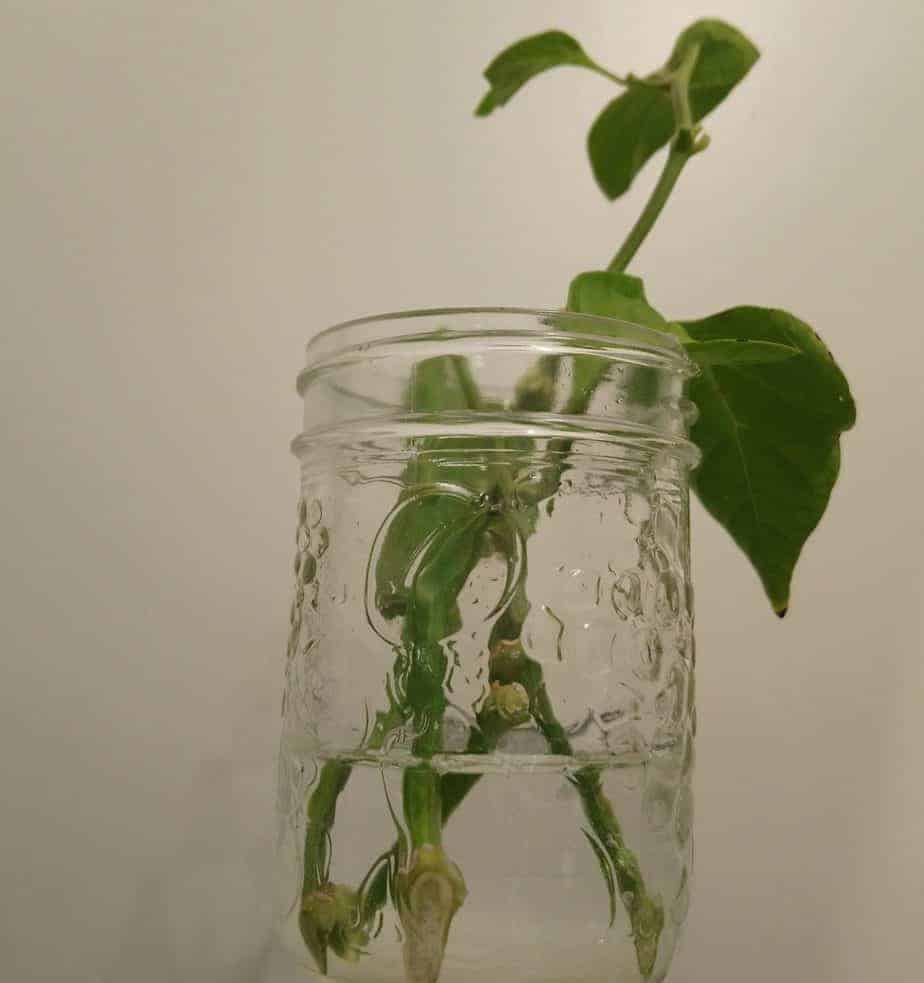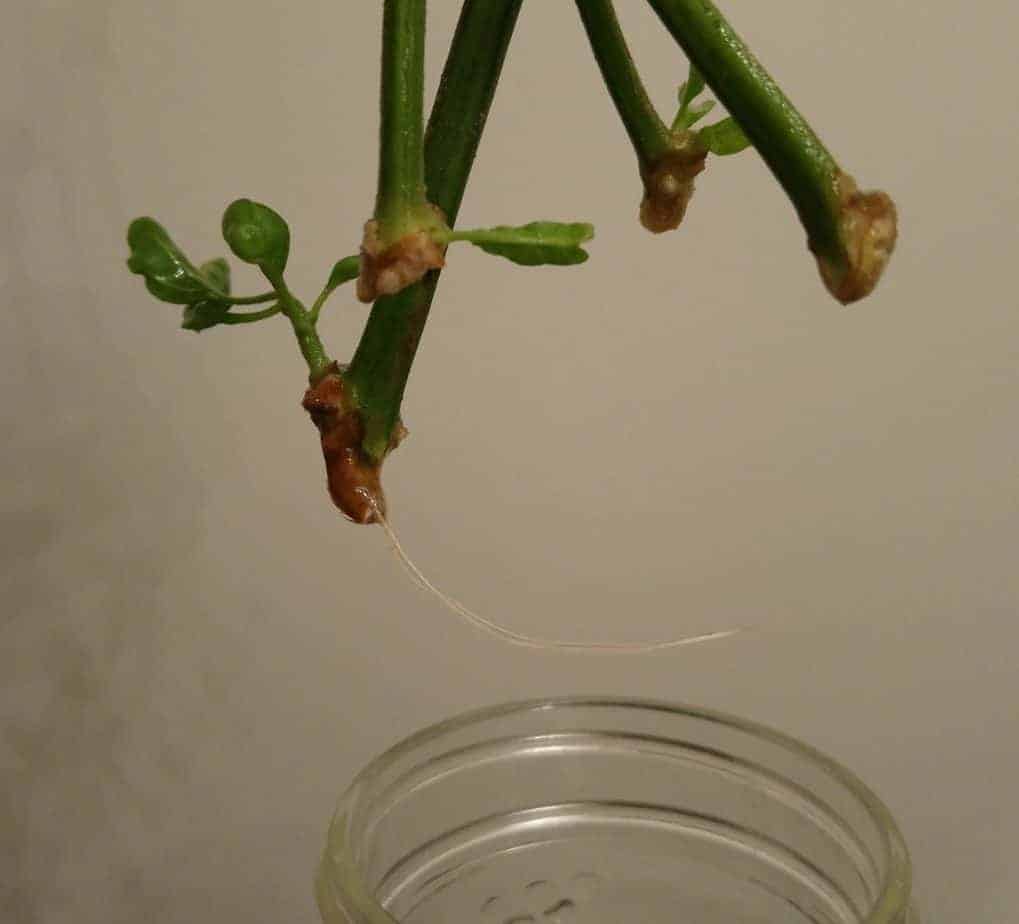If you’ve wondered if you can take cuttings from your favorite chili pepper plant and grow new plants from them, you’re in luck.
Even though chili peppers are commonly grown as annuals, they are technically perennials, so they will keep growing as long as they are kept out of the cold. This means you can overwinter peppers indoors, which some gardeners do, but it also means you can easily take cuttings and plant them as entirely new chili pepper plants, which can grow for many more seasons.
On this page:
Why You Should Consider Growing Chili Peppers from Cuttings
Growing chili peppers from cuttings saves time
Chili pepper cuttings will produce fruit sooner than growing chili peppers from seed.
When you plant pepper seeds, you have to wait for them to germinate, which could sometimes take a few weeks. Then, when they’re just a sprout, they grow very slowly for several weeks. After they get established, they reach a critical stage and you will see your pepper plants start taking off with quick growth.
In contrast, when you take a pepper cutting and place it in water (method described below) you will usually start to see new leaf growth even before the roots start growing. After a couple weeks, roots should form and you will be ready to transplant a pepper already at that critical stage. This can easily shave up to a month off your wait from planting to harvest.
You can clone your favorite pepper plants
Taking cuttings is a form of cloning called vegetative propagation. Many gardeners save seeds from their pepper plants, but if you don’t isolate your chili peppers or cover your pepper flowers, you could get cross-pollination with different peppers in your garden. With cuttings, you know with 100% certainty that the cuttings will be genetically identical to the parent chili pepper plant.
This can also be advantageous if you notice one of your pepper plants is outperforming the rest, even in the same growing conditions. You can clone it and keep growing more of them.
Chili pepper propagation is an easy way to increase the size of your pepper garden or just share your favorite pepper plants with friends and family.
What You Need Before You Begin
- sharp scissors
- alcohol wipes (for sterilizing your scissors and/or razor blade)
- a container for rooting your cuttings
- a healthy, mature pepper plant
- rooting hormone (optional)
- razor blade (optional)
Selecting a Pepper Branch for Propagation
You can take cuttings from any part of your chili pepper plant, but the best cuttings are taken from parts of your pepper plant that are somewhat green but not too mature and woody. Whether there are buds, flowers, or peppers on the branch doesn’t matter since they will all be removed in the process. Make sure that each branch has several nodes (the parts that look like knots in the stem, where branches and leaves grow from), which is where new leaves and roots will grow.
Method 1: How to Root Chili Pepper Cuttings in Water (Preferred Method)
1. Take your scissors and select an appropriate branch to cut. I like to take several cuttings, because not every cutting will successfully grow roots. Cut below a node, which is where the roots will grow from.
2. Remove every side branch on your chili pepper cuttings, and cut off all peppers, flowers, and buds. You can trim off the tip as well. Also cut off all but one or two leaves on the cuttings. The reason you should do this is because the cuttings are already undergoing lots of stress and supporting the growth of flowers

3. Using sharp scissors (or a razor blade), slice the bottom of your chili pepper cuttings at an angle, right below or through a node. This will increase the surface area so the cutting can take up water more easily until the roots form. Be very careful if using a razor blade as it’s easy for it to slip, and consider using a slow sawing motion in order to safely cut through the branch.

Optional step: You can also scrape the sides of the cutting along the bottom 1/2 to 1 inch. This promotes root growth in other types of cuttings but I personally haven’t seen much difference in pepper cuttings.
At this point, if you are using rooting hormone, apply it to the bottom 1/2 to 1 inch of the cutting.
4. Put your cutting in 1 to 1 1/2 of water in a clean container, out of direct sunlight. Replace with fresh water every few days for a few weeks, until you see new roots form.

5. When you see several roots growing, you can carefully transplant it into a container with potting mix and water thoroughly to help the roots adjust to growing outside of water.

Method 2: Rooting Chili Pepper Cuttings in Soil or Potting Mix
Start with the exact same steps as in Method 1, but instead of placing your cuttings in water, place them in a small pot with moist potting mix, at least 1 inch deep. Keep the potting mix moist, but not soggy.
I prefer Method 1 because I can see exactly if and when the roots are forming. If you see new leaves growing, that’s a good sign but doesn’t necessarily mean there are roots. Even if there is a lot of new leaf growth, I would wait at least 2 to 3 weeks before checking.
How Long Does It Take Pepper Cuttings to Root?
In my experience, it takes anywhere from 2 to 4 weeks before I see the first roots form. Occasionally, I may see tiny roots forming in less than 2 weeks.
After 4 weeks, if you still don’t see roots, but the cutting still looks healthy, you can keep waiting longer. However, if the bottom of your cutting is turning brown and soft, that means it’s rotting and should be thrown out.
